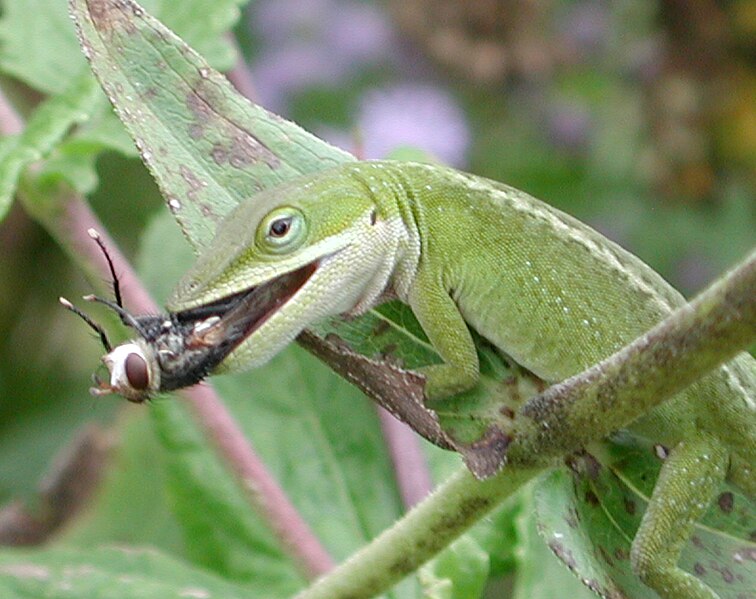Anoles display a staggering amount of phenotypic diversity, even in their genital morphology. Traditionally research has focused on characterizing the diversity and function of male genitals, or hemipenes, but females also possess paired genitals, or hemiclitorises, and yet almost nothing is known about them. In fact, female genital morphology is poorly understood across all reptiles. To date, we know that in some species hemiclitorises appear as miniaturized versions of hemipenes, whereas in other species they are unique structures. Further, the timing of sexual differentiation of genital structures appear to differ among lizard clades. Clearly, we need a broader understanding of the form, function, and evolution of female genitalia in reptiles.
In a fascinating poster, Casey Gilman, a graduate student at the University of Massachusetts, Amherst, presented her work on the development and morphology of hemiclitorises in the bark anole, Anolis distichus. Here’s the abstract:
Genitalia are extraordinarily diverse and show remarkably rapid evolution, relative to other morphological traits, across a wide range of animal taxa. Male and female genitalia in many animal groups begin as the same embryonic structures and later go through hormone-mediated differentiation. Surprisingly, little is known about the genetic mechanics of these processes. Even less is known about external genitalia differentiation in reptiles. Unlike other amniote groups, lizards and snakes possess a set of paired reproductive intromittent organs, called hemipenes. In a number of lizard species, females retain miniaturized versions of the male genitalia, called hemiclitorises. In these species, hemiclitorises can be used for taxonomic purposes, as they retain many morphological characteristics of the male genitalia, which are often species-specific. In lizards, the external genitalia of both sexes grow at the same rate until approximately halfway through embryonic development. Following this period, the hemipenes of the males continue to grow while the hemiclitorises of the females regress until they are about half the length of their male counterparts. We investigated the development of male and female external genitalia in Anolis distichus to determine the timing and patterning of growth and regression of these structures using histology, immunohistochemistry and whole mount in situ hybridization.









